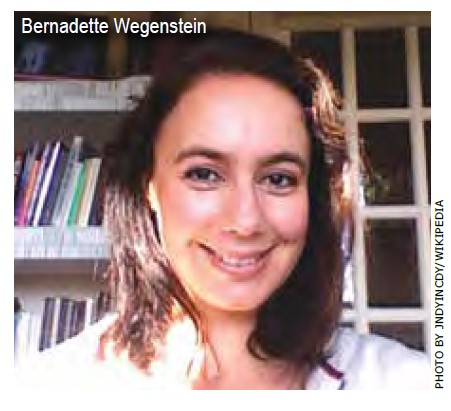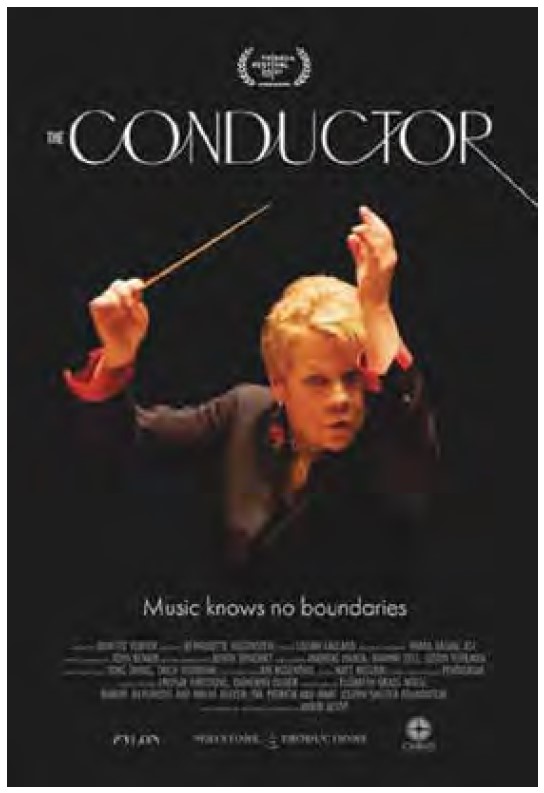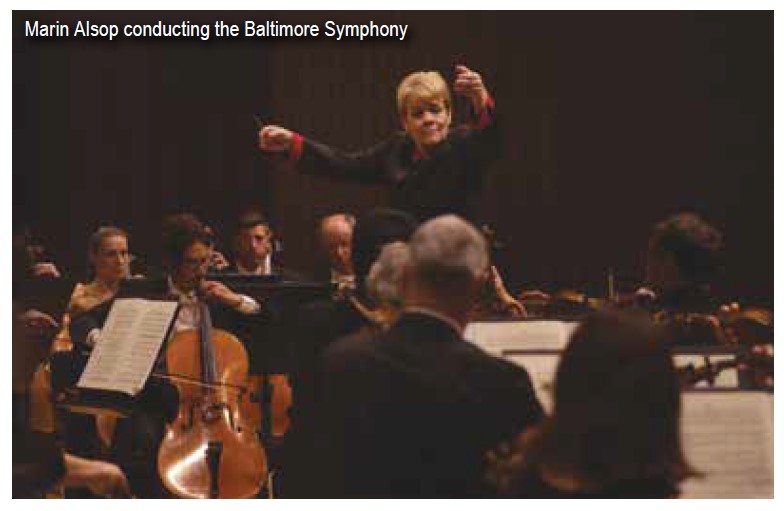
By Gary M. Kramer–
The fabulous documentary The Conductor, opening February 4 in San Francisco and available on demand February 28, is an affectionate profile of Marin Alsop, the first woman to head a major American symphony orchestra. Alsop, who is a lesbian, was inspired by Leonard Bernstein and wanted to conduct since she was a child. (She would study under him at Tanglewood.) However, when she expressed interest in conducting, she was repeatedly told, “Girls can’t do that.” It only made her determination stronger.
As director Bernadette Wegenstein’s inspiring film shows, it is a good thing Alsop persevered. Alsop’s love of music is infectious. Watching her teach a masterclass to students is one of the film’s many highlights, and watching her at work conducing in Baltimore or São Paolo, she is poetry in motion.

Wegenstein spoke with me for the San Francisco Bay Times about her new film.
Gary M. Kramer: How did you meet Marin and what do you recall about seeing her conducting?
Bernadette Wegenstein: I met her because I’m at John Hopkins, and she’s a colleague technically, because she’s in the music school here. I knew of her. When I moved here, people said, “You’re from Vienna; you should go to the symphony here.” I went, and I was really surprised. I saw Marin, and I thought: Why is she a woman? I caught myself asking this question. I knew how problematic it was. I wasn’t accustomed to seeing a woman in this position. I was attracted to her as a conductor and how she got this music under my skin.
Gary M. Kramer: What made you decide to tell her story?
Bernadette Wegenstein: I researched women and people of color and openly gay conductors who were forgotten. It’s such an extremely conservative profession. But I made the film about Marin because we’ve seen films about one man, so why not a story about one woman? It’s an allegory from which you can go into other stories of forgotten histories. I didn’t want to lump all these stories of diversity all together. I had to convince Marin to make it a story about her.
Gary M. Kramer: What did you know about conducting prior to making the film?
Bernadette Wegenstein: What did I know about conducting? Really very little. There are movements that mean something that are communicated like a sign language, like the figure four. What I knew and was attracted to most was the conductor needs to anticipate in a nanosecond what is going to happen. They are always a little bit ahead. That’s an art; when you hear rhythm, you want to go with that rhythm. But you have to anticipate the rhythm, so how does that work? I wanted to bring this [conducting] action close to me. That’s how I developed the “phantom” lens aesthetic for her action. She’s doing something important, but it is tiny movements like nanosurgery. These movements have meaning, and they really moved me. Rather than explain it to the viewer, I created the magic. It draws you in. Marin conducts exactly what is on the page and doesn’t give too much personalized deviation, which some conductors do. I tried not to overload the viewer with all this technical info, but it is there underneath.

Gary M. Kramer: As the director, you are a bit of a conductor. What can you say about creating the narrative, telling her story, using interviews, archival footage, observational scenes, and performances?
Bernadette Wegenstein: I didn’t want to put viewers on this “will she make it?” narrative. What is interesting is that she takes two steps forward then one step back. She shines then has a setback. That narrative reflected the marginalized identity who has to be threatened by the mainstream all the time. The arc of her career becomes about giving back to the next generation and being a mentor, like Bernstein, who was her mentor. We feel all of these emotions through her. The feminist signature of it is that she’s in control of telling the story. I wanted her to tell the story. I had very few experts. I tried to keep outside voices limited and empower my subject with her own voice and help her take us on the journey and not speak for her.
Gary M. Kramer: Did you use any specific motif?
Bernadette Wegenstein: There’s always a sentence or question that ties everything together in my films. The sentence in this film was, “I want to be a conductor.” The music became a character because if I want to be a conductor, I need to make the music work for me. The music is a tool. Everything she says and is shown in the film is asking the question: Does this relate to this wish?

Gary M. Kramer: You spend some time with Marin and her wife, Kristin Jurkscheit. What can you say about presenting her personal life?
Bernadette Wegenstein: I wanted to create a story where the fact that she was gay wasn’t in itself a story, just part of the normalcy around her. It’s not about being gay. Her wife Kristin said that Marin always wanted to be a conductor. She did not want to be a gay conductor, or a woman conductor—but a conductor. Once you point fingers and you say, “gay conductor,” it sticks. It was not something she talked about. I didn’t want to hide it—it’s her life and important—but I didn’t want to make it into a bigger thing in her story. I asked her if she ever faced discrimination for being gay, and she said, “No, being a woman alone was enough.”
© 2022 Gary M. Kramer
Gary M. Kramer is the author of “Independent Queer Cinema: Reviews and Interviews,” and the co-editor of “Directory of World Cinema: Argentina.” Follow him on Twitter @garymkramer
Published on January 27, 2022
Recent Comments